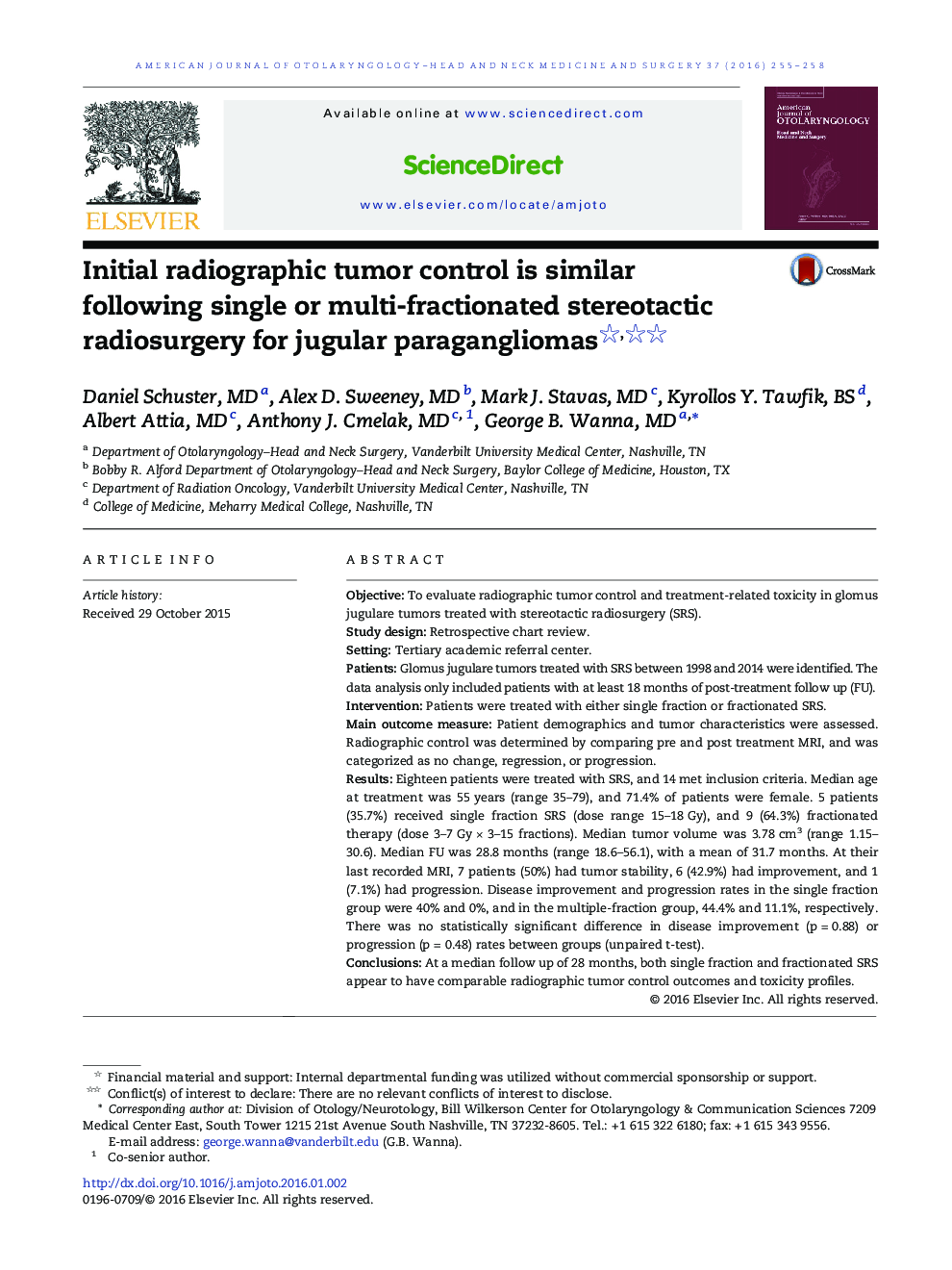| Article ID | Journal | Published Year | Pages | File Type |
|---|---|---|---|---|
| 4103030 | American Journal of Otolaryngology | 2016 | 4 Pages |
ObjectiveTo evaluate radiographic tumor control and treatment-related toxicity in glomus jugulare tumors treated with stereotactic radiosurgery (SRS).Study designRetrospective chart review.SettingTertiary academic referral center.PatientsGlomus jugulare tumors treated with SRS between 1998 and 2014 were identified. The data analysis only included patients with at least 18 months of post-treatment follow up (FU).InterventionPatients were treated with either single fraction or fractionated SRS.Main outcome measurePatient demographics and tumor characteristics were assessed. Radiographic control was determined by comparing pre and post treatment MRI, and was categorized as no change, regression, or progression.ResultsEighteen patients were treated with SRS, and 14 met inclusion criteria. Median age at treatment was 55 years (range 35–79), and 71.4% of patients were female. 5 patients (35.7%) received single fraction SRS (dose range 15–18 Gy), and 9 (64.3%) fractionated therapy (dose 3–7 Gy × 3–15 fractions). Median tumor volume was 3.78 cm3 (range 1.15–30.6). Median FU was 28.8 months (range 18.6–56.1), with a mean of 31.7 months. At their last recorded MRI, 7 patients (50%) had tumor stability, 6 (42.9%) had improvement, and 1 (7.1%) had progression. Disease improvement and progression rates in the single fraction group were 40% and 0%, and in the multiple-fraction group, 44.4% and 11.1%, respectively. There was no statistically significant difference in disease improvement (p = 0.88) or progression (p = 0.48) rates between groups (unpaired t-test).ConclusionsAt a median follow up of 28 months, both single fraction and fractionated SRS appear to have comparable radiographic tumor control outcomes and toxicity profiles.
